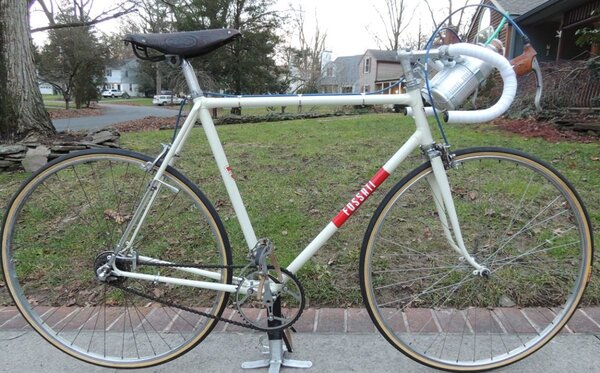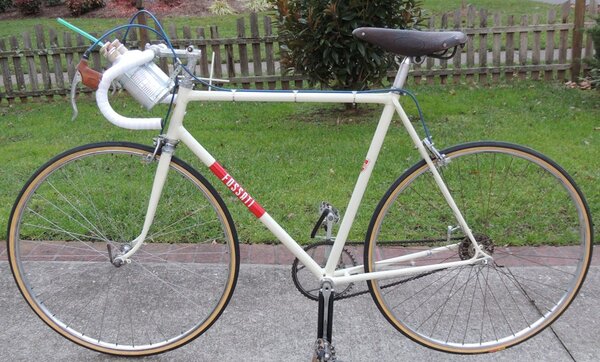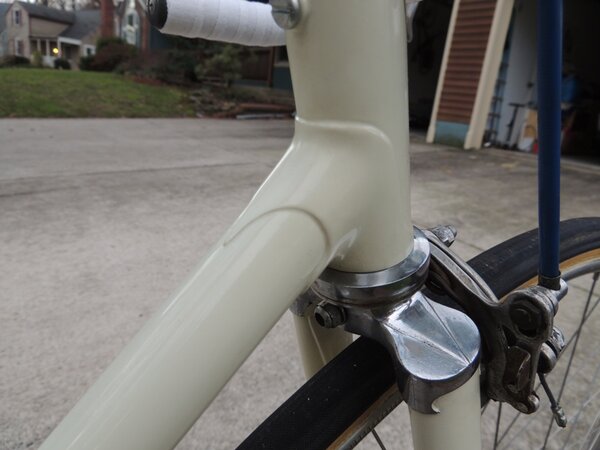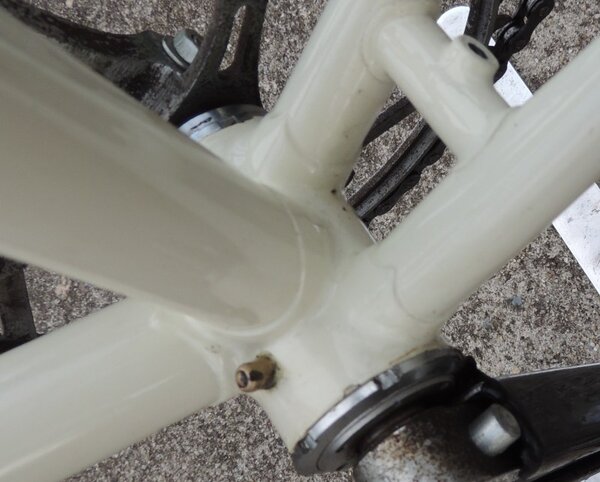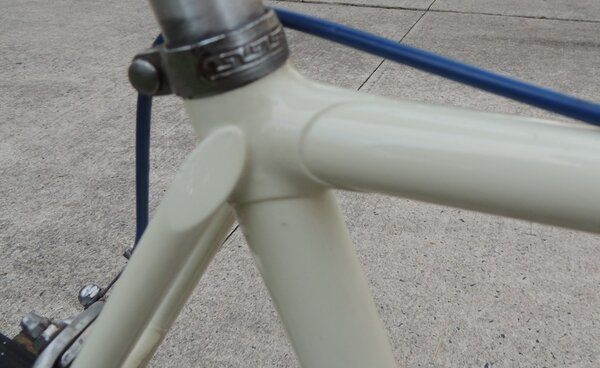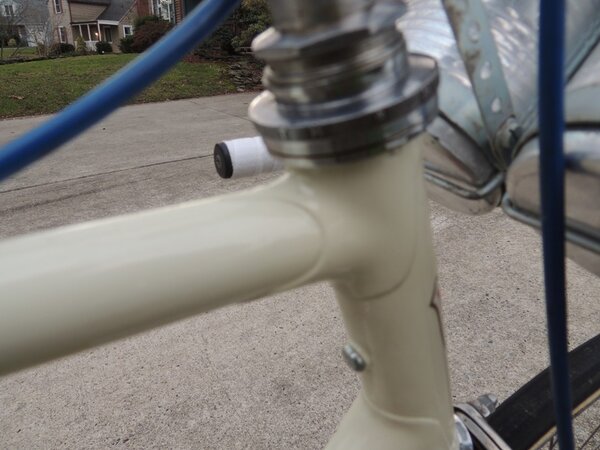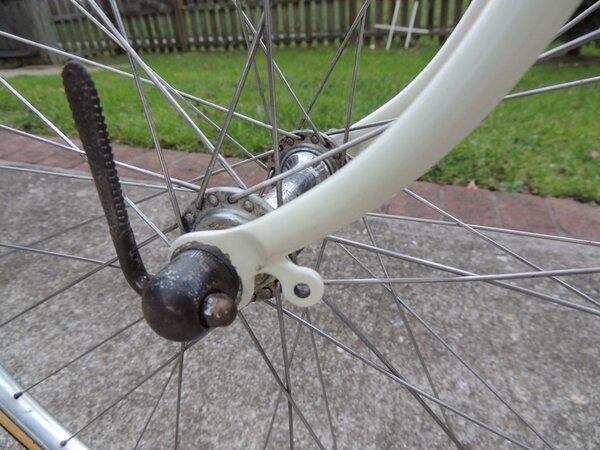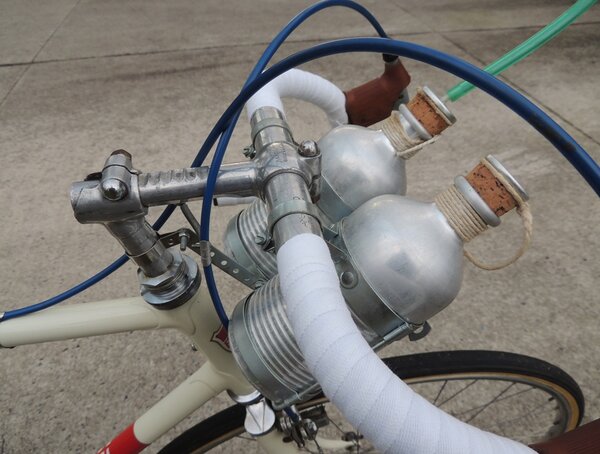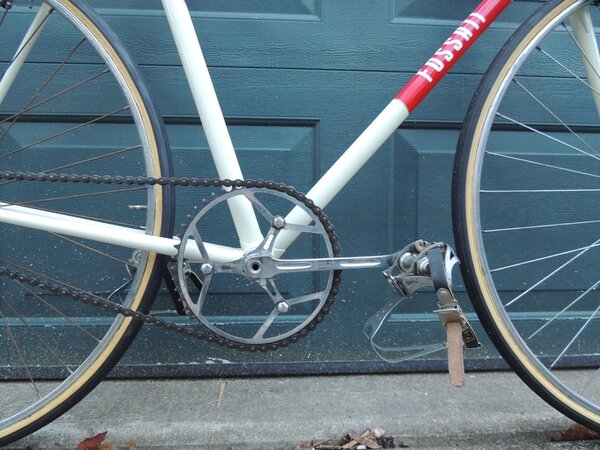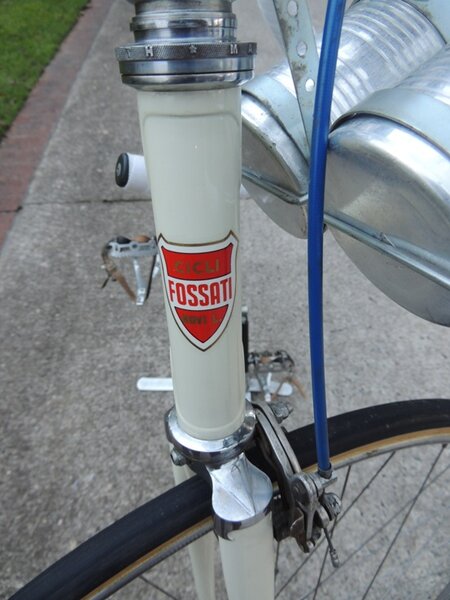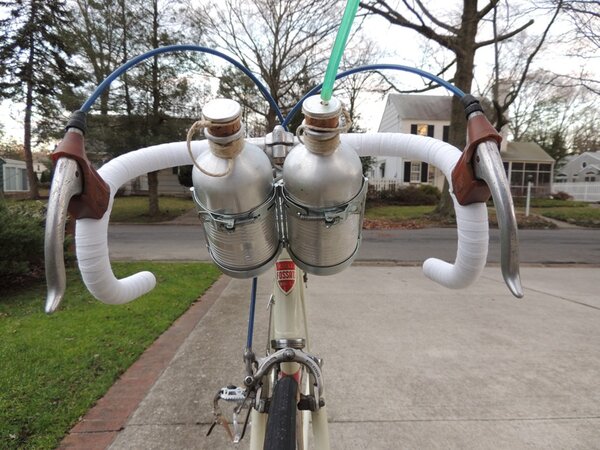Citoyen du monde
rBotM Winner
Mauro Fossati, was a frame-builder and mechanic who came from Novi Ligure. Novi Ligure is often referred to as the city of the campionissimi (city of super champions), this because it was the home town of Giardengo as well as Fausto and Serse Coppi.
You can find write-ups about Fossati as well as many prominent cyclists from Novi Ligure on the township website here: http://www.comunenoviligure.gov.it/serv ... ro_Fossati
It is only fitting that somebody who grew up in the hotbed of Italian cycling and had great mechanical aptitude would become a top-notch framebuilder and mechanic. Fossati was born in 1916 and passed away in 1977 after having spent over 40 years working in the bicycle industry and sport. His most prestigious work was undoubtedly as Fausto Coppi's head mechanic (with the Carpano-Coppi and Tricolfina Coppi pro teams), however if you ever get the chance to see one of his frames up close, you will see something special. The workmanship is absolutely first rate, especially when one considers that he did not have the benefit of modern mechanical tools and components. His file work is well-balanced and clean yielding lovely minimalist lugs.
If you have never looked closely at lugs, may I suggest that you look at these photos and then compare the lugs to those on the next bike that you come across. Observe how the transition from the greatest thickness of the lug gradually thins out as it reaches it edge (you can also close your eyes and simply feel the difference too). The consider how the shape of the various lugs fit together with one another.
As far as components go, the bike features the one seatstay lever Campagnolo derailleur which was given the name Paris Roubaix after Coppi won the 1950 race of the same name. This particular derailleur predates this race victory as it has not Paris-Roubaix marking on the chain guide. The hubs have 1949 cones, so I believe the bike dates from 1949 or early 1950. The chainset is a Magistroni Senior, the headset a Magistroni Zenith, the bars are Ambrosio Champion, the stem is an Ambrosio adjustable stem that is more commonly found on track bikes. The saddle is "butchered" Brooks B17; it may be original to the bike. It has been lowered and reshaped. It still shows the oval shaped logo on the skirts. Given the derailleur, I have fitted Clément Paris Roubaix tubulars. The brake calipers are Universal Mod. 39. The hubs are FB with Campagnolo Q/R skewers and Ambrosio rims.
You can find write-ups about Fossati as well as many prominent cyclists from Novi Ligure on the township website here: http://www.comunenoviligure.gov.it/serv ... ro_Fossati
It is only fitting that somebody who grew up in the hotbed of Italian cycling and had great mechanical aptitude would become a top-notch framebuilder and mechanic. Fossati was born in 1916 and passed away in 1977 after having spent over 40 years working in the bicycle industry and sport. His most prestigious work was undoubtedly as Fausto Coppi's head mechanic (with the Carpano-Coppi and Tricolfina Coppi pro teams), however if you ever get the chance to see one of his frames up close, you will see something special. The workmanship is absolutely first rate, especially when one considers that he did not have the benefit of modern mechanical tools and components. His file work is well-balanced and clean yielding lovely minimalist lugs.
If you have never looked closely at lugs, may I suggest that you look at these photos and then compare the lugs to those on the next bike that you come across. Observe how the transition from the greatest thickness of the lug gradually thins out as it reaches it edge (you can also close your eyes and simply feel the difference too). The consider how the shape of the various lugs fit together with one another.
As far as components go, the bike features the one seatstay lever Campagnolo derailleur which was given the name Paris Roubaix after Coppi won the 1950 race of the same name. This particular derailleur predates this race victory as it has not Paris-Roubaix marking on the chain guide. The hubs have 1949 cones, so I believe the bike dates from 1949 or early 1950. The chainset is a Magistroni Senior, the headset a Magistroni Zenith, the bars are Ambrosio Champion, the stem is an Ambrosio adjustable stem that is more commonly found on track bikes. The saddle is "butchered" Brooks B17; it may be original to the bike. It has been lowered and reshaped. It still shows the oval shaped logo on the skirts. Given the derailleur, I have fitted Clément Paris Roubaix tubulars. The brake calipers are Universal Mod. 39. The hubs are FB with Campagnolo Q/R skewers and Ambrosio rims.
